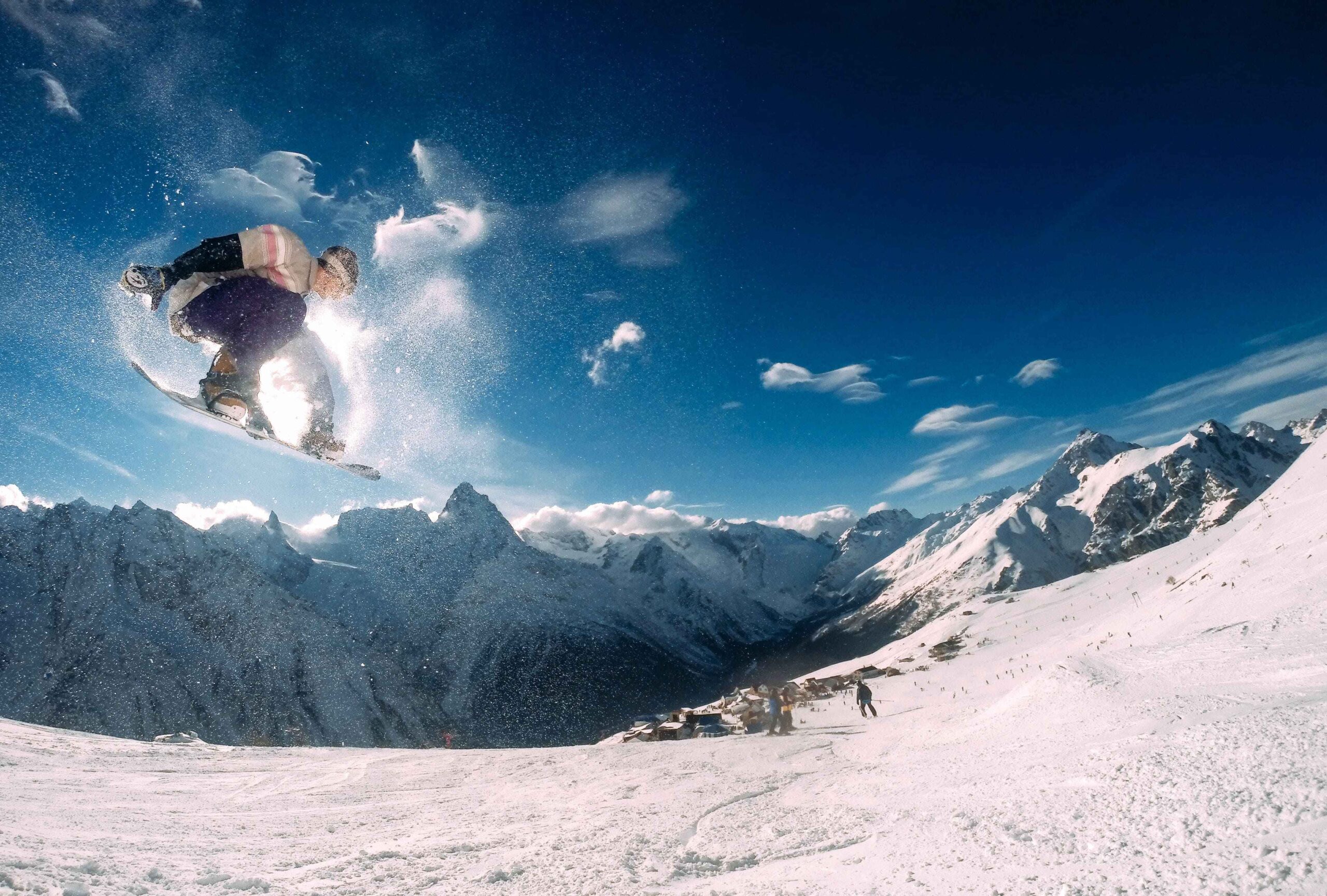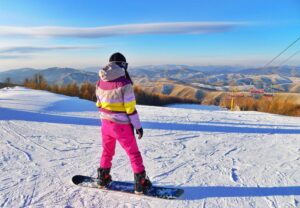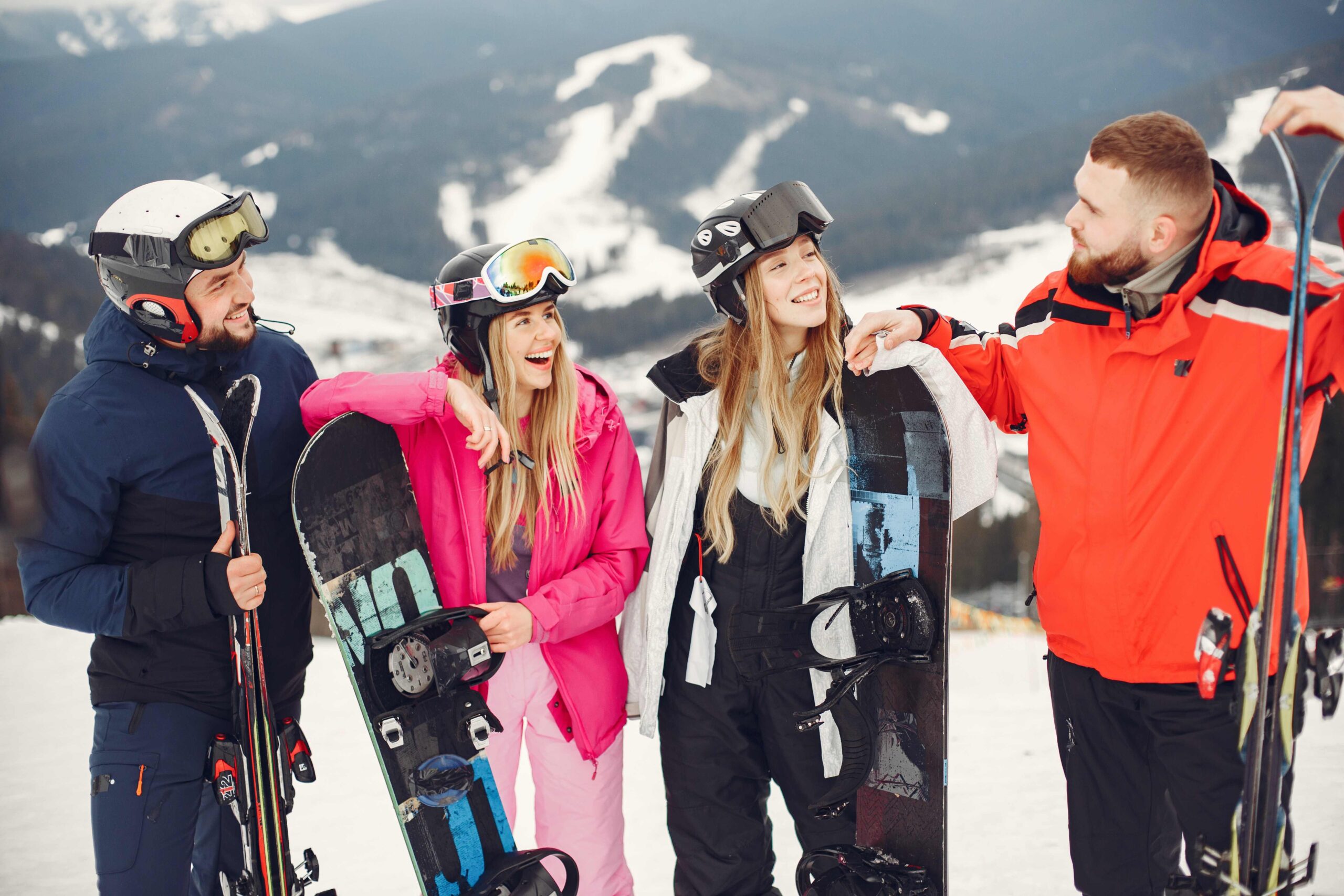
Skiing is a popular winter sport that provides a unique blend of adventure, exercise, and relaxation. Whether you are a beginner or an experienced skier, the thrill of gliding down the slopes is unmatched. In this article, we will provide you with an in-depth guide on how to ski, including everything from the gear you need to the techniques you need to know to enjoy the sport safely and confidently.
Getting the best (but right) gear!
The first step in learning how to ski is to equip yourself with the necessary gear. The most important items you will need are skis, boots, and poles. Skis come in different shapes and sizes, so it’s important to choose skis that are appropriate for your level of experience and the type of skiing you plan to do. If you are a beginner, consider purchasing rental skis or investing in beginner-friendly skis that are designed to be more forgiving and easier to control. Boots are also important, as they provide support and stability while skiing. Make sure the boots fit snugly but are not too tight, as you want to be able to move your feet freely. Finally, poles help with balance and are an essential part of skiing.
Aside from getting the best possible gear for your style, it’s equally as important to be able to spend as much time on the powder as you can. If you’re serious about picking up skiing as a hobby or a full time sport, you should consider getting a ski season pass. Yes they’re expensive but the benefits outweigh the cost as you can head up the mountain to ski as many runs as you want.
If the snow is good then you can ski all day but if it’s bad then you’d still be able to enjoy some runs if you want to. Just like getting a gym membership, the season pass makes it convenient to ski because everything is already paid for upfront!
Dressing Appropriately
It’s important to dress appropriately for skiing, as being cold or wet can ruin the experience. Layering is key, as you can easily add or remove layers depending on the temperature. Start with a moisture-wicking base layer, add a mid-layer for insulation, and finish with a waterproof and windproof outer layer. Make sure to protect your head and hands from the elements, as well.

Now that you’re adequately clothed, you’re well prepared to take your skis and head to the slopes. At this point, consider enrolling in some private lessons with a licensed instructor. Just like any sport, having a strong foundation is especially vital to helping you perform properly and within safety limits. You will be learning How to ski about proper form, how to stay balanced on your skis and it will help to build your confidence.
Lessons can be expensive especially for one-on-one private lessons. Try checking your local community to see if anyone can recommend group sessions or clinics, as this helps to spread out the cost to more people. Just remember that you’ll also be receiving less attention from the instructor compared to one-to-one lessons.
Safety Always Comes First
Before hitting the slopes, it’s important to understand the basic safety rules of skiing. Always wear a helmet, as it can help protect you from head injuries in the event of a fall. Additionally, make sure to follow the ski patrol’s instructions, stay within the designated ski area, and be aware of other skiers and snowboarders around you. Familiarize yourself with the signs and markers on the slopes, and always ski in control.
One of the most important safety tips is to make sure your gear is properly fitted to your size for comfort and to ensure you’re well protected. This is especially true when it comes to buying ski boots. Firstly, they shouldn’t hurt your feet when you’re wearing them but they also shouldn’t feel loose like a pair of flip flops. When the boot is too big, it won’t hold your feet and end up sliding around in the boot, this can be dangerous if you take a fall while skiing as you can easily twist your ankle. When boots are too tight, it hurts to wear them for long periods of time and you will get foot cramps, preventing you from being able to ski as much as you’d like.
Boots that are too loose also prevents you from controlling your skis with precision. Unfortunately, this is also a common beginner mistake as they might think its comfortable without considering its effects when skiing. If you can, get boots that can be moulded to your feet.
Key to Having Proper Posture and Balance
The key to skiing is maintaining good posture and balance. Stand tall with your weight centered over your skis, and keep your knees slightly bent. Keep your arms in front of you, and use your poles to help maintain your balance. As you ski down the slope,  keep your weight forward and let your legs do the work.
keep your weight forward and let your legs do the work.
Putting theory into practice can be an eye opening process so if you’d rather try out skiing first before fully jumping in, a good option is to look at ski rentals. Nearly every ski resort in the country will have skis for you to rent and charge you on a daily or hourly basis. You can then try out the sport before deciding to spend hundreds if not thousands of dollars on the equipment.
Practice Your Turning, Stopping and Other Techniques
To turn on skis, you need to shift your weight from one ski to the other. Start by leaning into the turn and then transfer your weight to the downhill ski. Keep your knees bent and use your upper body to initiate the turn. As you get more comfortable, you can try making wider, more confident turns.
Whether you decide to take lessons from an instructor or not, it is always best to ski with people who are more experienced than you. People learn things differently and some learn faster by copying what other people are doing. If your family and friends are better skiers than you, don’t be embarrassed to invite them out to the mountain for a day!
While they may snicker at how often you’re falling, remember that you come out the winner in the end because you will learn so many things at a faster rate, compared to if you went at it alone. It also makes skiing a lot more fun and enjoyable when you have people to share the ups and downs together with.
Learn The Many Ways of Stopping
To stop skiing, you can use the “snow plow” technique. This involves pointing the tips of your skis towards each other and then gradually bringing the skis closer together until you come to a stop. You can also use the “stem” technique, which involves pointing one ski straight down the hill while keeping the other ski at an angle.
If you haven’t mastered the basic techniques of skiing, there’s no harm to continue the beginner slops at first. Focus on improving your technique, control and confidence first before attempting the more advanced courses. Not only will you be able to ski more competently then, you’re also able to have more fun but have enough control to avoid colliding into other people or sliding uncontrollably off the track.
Practice, Practice, Practice
Practice makes perfect, and skiing is no exception. Start on gentle slopes and gradually work your way up to steeper terrain as you gain confidence and experience. Pay attention to your technique and adjust as needed. Take lessons if you can, as they can provide you with invaluable tips and guidance.
If you look at any other sport, you’ll understand the practice really does make perfect. How are NBA players good at scoring baskets? How are NFL players good at scoring touchdowns? They’ve probably put in countless hours honing their craft and this is true for skiing. Whether you’re aiming for the Olympics or just want to ski recreationally, it’s more fun to be able to do things right instead of falling on your behind all the time.
You can head out to the slopes alone and focus on improving your posture, technique, turns and stops. Yes, skiing is more fun when there are more people but skiing alone really allows you to take note of everything you’re doing right and wrong. You won’t have anyone to compete with so you can focus on technique rather than speed. This helps tremendously for any beginner skier’s growth!

Final tips for beginners on how to ski
Skiing is a sport that relies heavily on the lower body, primarily the legs. When it’s off-season, spend some time in the gym to build up your endurance and your leg muscles, like your quads and calves. You don’t have to aim for size but adding a few reps of squats and lunges to your workout will do wonders for your skiing experience later on.
Conclusion
In conclusion, skiing is a wonderful sport that offers a unique blend of adventure, exercise, and relaxation. By following the tips outlined in this guide, you can enjoy skiing safely and confidently. Remember to dress appropriately, follow the basic safety rules

 About the author
About the author